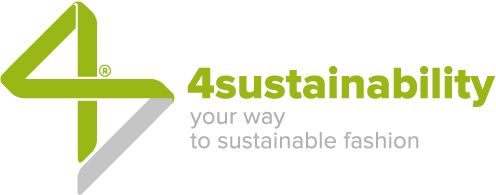Once again this year, the Global Fashion Summit brought together brands, policymakers, investors, solution providers, and international organizations in Copenhagen under a deliberately evocative theme: Unlocking Barriers. Building Bridges.
Our participation as an Innovation Forum Exhibitor – our first under Ympact, the new brand representing our group’s solutions – offered us a broad perspective on the challenges and innovations shaping the future of the fashion industry.
What follows is our account of the experience.
The Courage to Act. Even When Signals Are Mixed
Just weeks after the release of the EU’s Omnibus legislative package and with the implementation of the Digital Product Passport on the horizon, the 2025 edition of the Global Fashion Summit once again raised a fundamental question: What does it really take to accelerate fashion’s sustainable transformation?
The answer most often echoed was this: leadership. More than regulations or market constraints, it is the ability of companies – and the people who lead them – to make forward-looking choices that will determine the industry’s path forward. Even in complex and uncertain contexts,
“We heard a powerful message we fully endorse: sustainability is one of the most important drivers of competitiveness, but it demands courage, vision, data-driven methodology, and leadership capable of turning barriers into bridges. It is leadership that drives change – not the other way around,” said Francesca Rulli, co-founder of Ympact, who attended the Summit in person.
The keynote speech by Federica Marchionni, CEO of Global Fashion Agenda, gave form to this call for change, framing the Summit’s agenda around five key enablers: innovation, capital, courage, incentives, and regulation.
These are five complementary levers that must be activated together if we want to move from experimentation to systemic transformation.
“Sustainability is a marathon, not a sprint,” Marchionni declared in her opening remarks, urging stakeholders to move beyond crisis response and toward long-term, sustained commitment.
A Global Outlook with Room to Grow
The Summit confirmed its role as a pivotal space for global dialogue, capturing the sweeping environmental, regulatory, and technological shifts reshaping the industry. It also proved strategic for those like us, working side by side with businesses to turn goals into measurable impact reduction.
Yet, some gaps stood out – most notably, the underrepresentation of the production supply chain, both on stage and in the audience.
“We felt a strong, positive energy from brands, NGOs, solution providers, and students. But the voice of the supply chain – the part of the system that turns strategy into process every day – was largely missing. That’s something worth reflecting on,” Rulli noted.
Italy’s limited presence was also surprising, given the country’s leading role in global textile and fashion manufacturing.
“There is so much value in sharing the experience of Italian suppliers who have been implementing tangible sustainability projects for years. From chemical safety to decarbonization, from traceability to recycling, there is a wealth of expertise and results that deserves to be seen.”
Making Innovation Clearer
As Innovation Forum Exhibitors, we had a front-row view of the Summit’s vibrant showcase of cutting-edge solutions for sustainability: digital traceability, bio-based materials, regenerative business models, and advanced circularity metrics.
Technology opens up extraordinary possibilities – but on its own, it’s not enough. Without vision, harmonized methodologies, patient investment, and clear rules, these tools risk remaining prototypes with no real-world application.
It’s also challenging to navigate the wide array of solutions, even when grouped into umbrella categories like traceability or “impact measurement.
“Diversity in solutions is always valuable, but it can be disorienting without a clear narrative. Behind similar-sounding terms often lie very different approaches. What businesses need is guidance to identify the options that truly align with their goals,” Rulli emphasized.
Rules, Transparency, and Governance
Compliance was a strong theme throughout the Global Fashion Summit, confirming that regulatory evolution – from the Corporate Sustainability Due Diligence Directive (CSDDD) to anti-greenwashing legislation – is no longer a distant goal but a concrete driver of transformation. Traceability, reporting, and integrated data management are quickly becoming prerequisites for market access.
“In our daily work,” explains Rulli, “we see this firsthand – and more importantly, we demonstrate it together with hundreds of suppliers who are achieving tangible results in decarbonisation, water use reduction, the elimination of hazardous chemicals from production processes, recycling… all thanks to a structured framework like 4sustainability®.”
Collaboration and shared value
The event’s agenda, thoughtfully built around the five pillars outlined by Marchionni in her opening keynote, gave due prominence to innovation and climate strategy. Other topics, however, such as stakeholder collaboration and value distribution across the supply chain, would have deserved equally in-depth attention.
“In some of the panels focused on social impact, rights were discussed, but little was said about collaborative models, which are in fact essential to building sustainable production systems,” Rulli observed. “Without the active involvement of the supply chain and a rebalanced relationship between profit and impact, the transition cannot be fully realised. What’s needed is connection and dialogue between brands and suppliers. In this respect, Ympact stands out as the only one-stop solution addressing both brands and supply chains, combining method, technology, and expertise in a single integrated offer. It’s an approach designed to enable sector-wide transformation towards transparency and sustainability – where products are traceable, and supply chains are accountable.”
The closed format of some sessions, reserved for selected stakeholders, also raised questions about the openness such spaces for dialogue ought to guarantee.
“We believe sustainability must also mean inclusion and accessibility. Broadening participation – through more open and cost-accessible formats – would be a step forward towards more effective stakeholder engagement.”
Our Key Takeaways and What’s Next
We return from Copenhagen with several important confirmations. Here are some of the most relevant insights:
- Regulation waits for no one. Structured data collection systems are essential, with integrated approaches that involve both internal functions and supply chain actors.
- Leadership is revealed in challenging times. Without vision and courage, it’s hard to move forward, especially when markets slow down.
- Collaboration is a requirement, not a choice. Everyone needs to move in the same direction.
- Innovation means implementation. Technology and solutions abound, but they must be integrated intelligently and pragmatically.
- Sustainability is systemic. Overcoming individualistic approaches is the key to reducing impact and gaining competitiveness.
We’ll explore these themes further on October 3rd at the 2025 edition of the 4sustainability® Event, hosted by Eurojersey. Through real-life case studies and the contributions of leading voices, we’ll demonstrate how harmonised methodologies, data sharing, stakeholder collaboration, and interconnected technologies can make the supply chain more efficient, protect brand reputation, and reduce environmental and social impacts.
Also in October, at the Venice Sustainable Fashion Forum, Italy will play a leading role in a conversation that we hope will inspire broader international contexts like the Global Fashion Summit – giving greater voice to manufacturing and more visibility to the value generated by different business models, territories, scales, and cultures.
“Sustainability is about plurality – respecting diversity and the contributions of each actor,” Rulli concludes. “It’s also the very essence of Sustainable Development Goal 17: Partnerships for the Goals. And it’s the path we’ll keep working on.”

